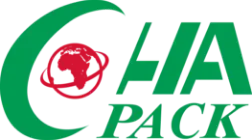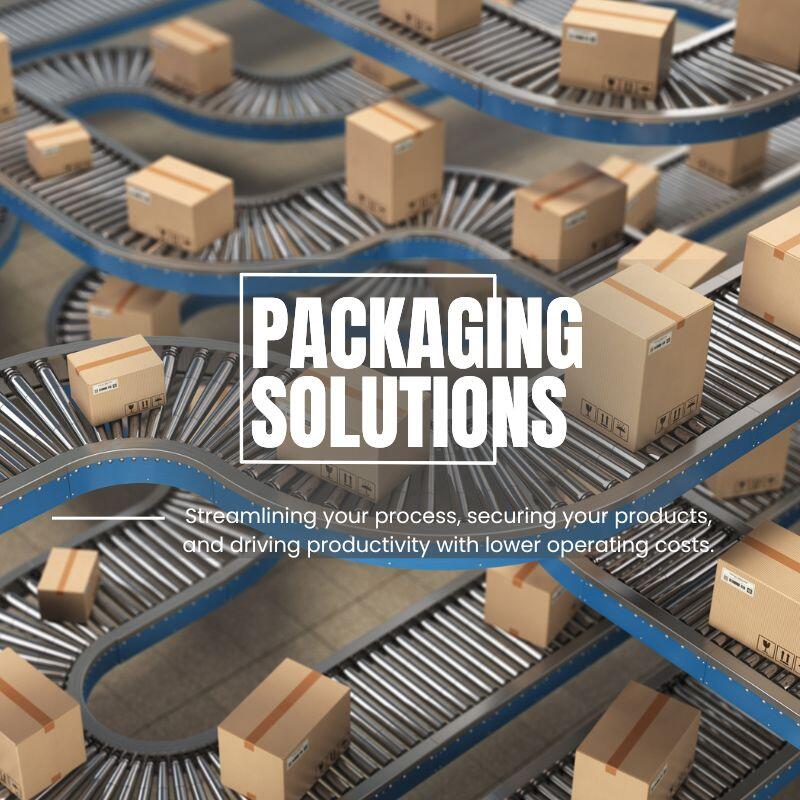Key Considerations and Solutions for Improving End-of-Line Packaging
- Home
- Solutions
- By Application
- Key Considerations and Solutions for Improving End-of-Line Packaging
Key Considerations and Solutions for Improving End-of-Line Packaging
Every product journey ends with a package, but what happens behind the scenes? End-of-line packaging isn't just about wrapping products — it's the final, critical step in ensuring products reach customers safely and efficiently.
But getting those end-of-line operations right in the modern world means tackling some big strategic challenges, such as rising costs, the demand for speed, and the need for adaptable solutions.
To tackle these challenges head-on, optimizing end-of-line operations is essential.
What is End-of-Line Packaging
At the end of the manufacturing process, end-of-line packaging takes center stage as the essential tertiary packaging. This is the final step to prepare products for their journey through the supply chain.
Its primary function is to protect finished products for transportation and storage. Beyond protection, it also optimizes logistics and provides important labeling information.
Common End-of-Line Packaging Equipment
Case Packers
Case packers automatically place single or multiple products into cartons, streamlining the initial product grouping.
Carton Sealers & Carton Erectors
Carton erectors automatically form flat cardboard into open cartons, while sealers close them using tape or hot melt glue.
Stretch Wrappers
Stretch wrappers wrap products and pallets with plastic film, preventing shifting or scattering during transportation.
Strapping Machines
These machines bind products and pallets using plastic or steel straps for added reinforcement.
Shrink Wrappers
Shrink wrappers encase products in heat-shrink film to improve stability and aesthetics.
Palletizers
Palletizers are automated systems that stack cartons, bags, or bulk products onto pallets for efficient storage and transport.
Labeling Systems
Automated labeling systems apply labels for product identification and precise tracking.
Void Fill Machines
Void fill machines provide cushioning materials, such as air pillows or paper, into packages to prevent products from moving around.
Checkweighers
Checkweighers automatically weigh items and detect and screen out any underweight or overweight to ensure consistent quality.
Combination Packaging Systems
These systems integrate multiple end-of-line functions, like packing, sealing, and strapping, into a single unit. They offer fully automated, all-in-one solutions that maximize efficiency and consistency.
Consideration 1: Packaging Efficiency & Automation
Undoubtedly, businesses are always looking for ways to optimize end-of-line packaging. But the real challenge is improving production efficiency and precision while reducing manual intervention.
Automated equipment
Automation transforms packaging by reducing human labor and errors, ensuring precision and reliability across the packaging line.
Advanced equipment, like CHUEN AN PACK’s CHS-6701 automatic carton erector and CHS-6605 carton sealers, handle massive product volumes with speed and accuracy manual operations simply cannot match.
Real-Time Monitoring and IoT Integration
With IoT and Industry 4.0 at the helm, businesses can take control of their packaging operations.
Real-time monitoring provides the data needed to quickly analyze performance, pinpoint bottlenecks, and perform predictive maintenance even when no visible issues have appeared.
Process Optimization
To improve end-of-line packaging solutions, you have to optimize the process itself. Start with standardized operations (SOPs). Clearly defining parameters, like tape length or sealing pressure, cuts out the guesswork and drastically reduces manual adjustments.
Then, implement parallel processing. This allows your line to perform multiple tasks simultaneously. Imagine printing labels while boxes are sealing — a massive boost to your overall throughput.
Personnel and Organizational Enhancement
When you train employees to handle multiple functions, you can maximize resource utilization and increase overall efficiency.
Setting up cross-departmental rapid response teams also helps. These teams quickly tackle urgent orders or unexpected equipment problems.
Consideration 2: Packaging Material Selection & Cost Control
Material selection is a balancing act in end-of-line packaging. Businesses need to strategically choose materials that are cost-efficient and durable. The key concern is optimizing costs without compromising packaging quality.
Match Product Characteristics
The right material choice hinges on your product's characteristics. Fragile items need cushioning like bubble wrap or foam. Use compression-resistant materials like EPS/EPP or moldable pulp for varied weight or shape.
Always pick materials optimized for automation, such as lightweight or recyclable options, because this minimizes jams when packaging different product types.
Transportation Method
Your transport method directly influences material choice. For air freight, prioritize lightweight options. Sea transport and humid environments demand moisture-proof or waterproof materials to protect products from environmental damage.
Sustainability
To support sustainability goals, opt for biodegradable or recyclable materials. Simplifying product designs also minimizes overall material use.
It directly lowers your carbon footprint, cuts costs, and aligns with growing consumer expectations for greener solutions.
Standardize Materials
Focus on bulk purchasing with reliable suppliers, as this gives you significant unit cost savings. And utilize pre-cut materials to cut waste, save time, and lower labor costs.
Data-driven Decisions
Track costs and performance consistently through data analysis to refine your operations.
Moreover, conducting a Life Cycle Assessment (LCA) will help you evaluate a material's total impact to pick truly cost-effective and eco-friendly options.
Consideration 3: Product Protection & Packaging Stability
End-of-line packaging is your final defense against transit hazards. But it's challenging to ensure products remain safe and stable against every impact and movement during transportation.
Automated Stacking and Wrapping
Product stability starts with smart stacking and wrapping. Automatic palletizers precisely stack products and minimize tipping risks.
Then, solutions like the CHW-1824A Automatic Stretch Wrapper tightly secure products on pallets, preventing shifting and damage during transit.
Smart Material Choice
Match your materials to the product. Fragile items need good cushioning from things like compression-resistant cartons or bubble film.
But don't stop there — complete the job with high-precision carton sealing systems. That's what locks everything down and prevents leaks and damage.
Product Positioning
Positioning and fixing technologies like pneumatic clamps keep items from shifting around. Minimizing movement inside the packaging is what prevents damage during transportation.
Consideration 4: Packaging Flexibility & Adaptability
Product diversity and custom orders are the new normal. This creates a big challenge for end-of-line packaging solutions: how do you keep lines flexible for varying product types and custom designs?
Modular Design
Modular equipment is a game-changer. Components can be quickly combined, swapped, and adapted to different product specifications or packaging demands. That's how you cut your reconfiguration time drastically for custom orders.
Intelligent Vision Systems
Intelligent Vision Systems automatically identify product details, such as position, shape, and size, so equipment can precisely adjust operations.
You get far more flexibility and accuracy, especially when handling different types of products.
Multi-Purpose Machines
Need to do more with less? Invest in multi-purpose machines. These machines combine tasks like packing, sealing, and palletizing into one.
A single, versatile unit can be quickly adjusted to handle different product shapes, sizes, or packaging requirements.
Open Software Platforms
Use open software platforms so you have the power to quickly integrate customized parameters. This simplifies setup and increases your line's adaptability.
Partner with an End-of-Line Packaging Expert: CHUEN AN PACK
Achieving an efficient, flexible, and sustainable end-of-line packaging solution isn't just one fix. It demands a multi-dimensional, collaborative approach. Integrating advanced automation, smart materials, and digital management across your operations ensures consistent performance and long-term competitiveness for your business.
But you don’t have to figure this out alone — partner with CHUEN AN PACK, we have extensive experience in manufacturing automatic packaging machinery.
Bringing over 30 years of experience, we offer a wide range of secondary packaging solutions, from case erectors and carton sealers to pallet stretch wrappers and complete automated lines. With in-house design, manufacturing, and support, we deliver customized systems built to perform. Contact us today to learn more.


